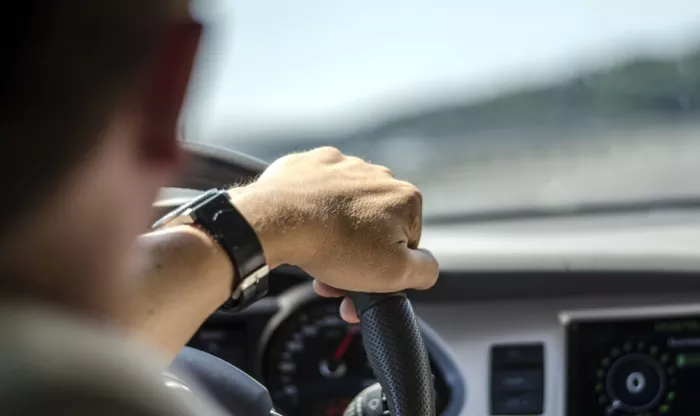Glaucoma is a serious eye condition that can lead to vision loss if left untreated. One common treatment is laser eye surgery, which helps reduce eye pressure and prevent further damage. But many patients wonder: Can you drive after laser eye surgery for glaucoma?
The answer depends on several factors, including the type of laser surgery, your recovery progress, and your doctor’s advice. In this article, we’ll explain everything you need to know about driving after glaucoma laser surgery, including recovery tips and safety precautions.
What Is Laser Eye Surgery for Glaucoma?
Laser eye surgery for glaucoma is a procedure that helps lower intraocular pressure (IOP) in the eye. High IOP is a major risk factor for glaucoma, and reducing it can prevent further optic nerve damage.
There are different types of laser surgeries for glaucoma, including:
Selective Laser Trabeculoplasty (SLT) – Targets the drainage system to improve fluid flow.
Argon Laser Trabeculoplasty (ALT) – Similar to SLT but uses a different laser type.
Laser Peripheral Iridotomy (LPI) – Creates a small hole in the iris to improve fluid drainage.
Cyclophotocoagulation – Reduces fluid production in the eye.
These procedures are usually quick, minimally invasive, and performed in an outpatient setting.
How Soon Can You Drive After Laser Glaucoma Surgery?
The ability to drive after laser glaucoma surgery varies for each patient. Here’s what you should consider:
Immediately After Surgery
Most patients should not drive right after surgery. Your vision may be blurry, and your eyes might be sensitive to light. Additionally, the numbing drops used during the procedure can temporarily affect your vision.
First 24 Hours
Many doctors recommend avoiding driving for at least 24 hours. During this time:
- Your eyes may feel irritated or watery.
- You might experience mild discomfort or glare sensitivity.
- Your vision may fluctuate as your eyes adjust.
After 24-48 Hours
If your vision is clear and you feel comfortable, you may be able to drive. However:
- Get approval from your doctor first.
- Avoid driving at night if you experience glare or halos.
- If you still have blurry vision, wait longer before driving.
Long-Term Considerations
Some patients recover quickly, while others take days or weeks. Factors affecting driving ability include:
- The type of laser procedure.
- Your overall eye health.
- How well your eyes respond to treatment.
Risks of Driving Too Soon After Laser Glaucoma Surgery
Driving before your eyes have fully recovered can be dangerous. Potential risks include:
Blurry Vision – Makes it hard to see road signs or obstacles.
Light Sensitivity – Bright headlights or sunlight may cause discomfort.
Delayed Reaction Time – Eye strain can slow your reflexes.
Increased Glare – Halos around lights can impair night driving.
To stay safe, always follow your doctor’s advice before resuming driving.
Tips for Safe Driving After Glaucoma Laser Surgery
If your doctor clears you to drive, follow these safety tips:
Start with Short Trips – Test your vision on familiar roads before long drives.
Avoid Night Driving Initially – Glare and halos are more noticeable at night.
Wear Sunglasses – Protect your eyes from bright sunlight.
Keep Follow-Up Appointments – Ensure your eyes are healing properly.
Listen to Your Body – If your vision feels off, stop driving and rest.
When to Avoid Driving Completely
Some patients should avoid driving for a longer period, especially if they:
- Have significant vision loss before surgery.
- Experience prolonged blurriness or discomfort.
- Are taking medications that cause drowsiness.
If you’re unsure, ask your eye specialist for guidance.
Alternative Transportation Options
If you can’t drive right away, consider:
- Rides from family or friends.
- Public transportation.
- Ride-sharing services (Uber, Lyft).
- Taxis or medical transport services.
Planning ahead ensures you stay mobile while recovering.
How to Speed Up Recovery After Laser Glaucoma Surgery
To help your eyes heal faster:
- Use prescribed eye drops to prevent infection and inflammation.
- Avoid rubbing your eyes to prevent irritation.
- Rest your eyes frequently, especially in the first few days.
- Wear protective eyewear if recommended by your doctor.
Long-Term Driving with Glaucoma
Even after recovery, glaucoma patients should monitor their vision regularly. Over time, glaucoma can cause peripheral vision loss, making driving unsafe. Regular eye check-ups help ensure you meet legal driving requirements.
Conclusion
Can you drive after laser eye surgery for glaucoma? Yes, but not immediately. Most patients need at least 24 hours before driving, and some may require longer. Always follow your doctor’s advice and prioritize safety.
If you experience prolonged vision problems, consult your eye specialist before getting behind the wheel. With proper care and patience, you can return to driving safely after glaucoma laser surgery.
Related topics:
What Are The Most Common Eye Surgeries?
Reattach Retina: Everything You Need to Know
what are the risks of lasik eye surgery?


